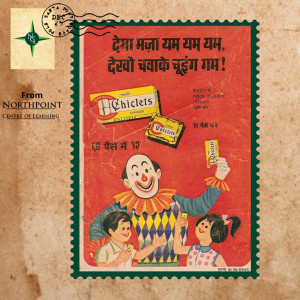What is the one thing that ties chewing gum and advertising?
Contrary to popular belief, both of them have beginnings rooted in ancient history.
While advertising began with the ancient Egyptians carving out notices on metal in 2000 BC, chewing gum began as lumps of tree resins chewed on by prehistoric men and women. The Ancient Mayans chewed chicle, which was sap from the Sapodilla tree.
Chewing gums were manufactured by John Curtis in 1848, as the habit passed on to American settlers. Earlier gum was quite sticky and flavourless, until paraffin wax was added to it.
In 1871, Thomas Adams patented a machine to manufacture chewing gum. It wasn’t until the late 1870’s that flavours were added to chewing gums. Adams was the first one to sell chewing gums out of a vending machine. He called them Tutti-Fruti.
By the late 1880’s, Adams gum was sold widely. They produced five tons of chewing gum daily.
It wasn’t until the early 1900’s that Chiclets was added to the list.
Wrigley’s started selling chewing gum in 1891. He was the first one to advertise chewing gum and had a huge role in making it wildly popular among the masses.
The first chewing gums to be brought to India were the Wrigley’s double mint, spearmint, and chiclets.
They were officially launched around 1950-60’s and were greatly popular amongst adults and kids alike.
Advertisement for chewing gums in India were largely limited to print ads until local companies like Big Babool started advertising on kids’ channels.
Chewing gums have certainly come a long way: from being used by ancient Mayans to stay off thirst and hunger, to Nicotine gums helping people trying to kick the butt, just like it’s advertising, the humble stick too has come to be one of the symbols of the modern world.
– Abhinav Roy
PGPMR ’17-18


Juliann
May 3, 2020Very good information. Lucky me I came across
your website by accident (stumbleupon). I have saved it for later!